The late Ursula K. Le Guin complained that when she taught creative writing classes, there were always students who had a fine command of prose mechanics, but no notion of what a story is or how to tell one. She never could find a way to explain to such students what it was that she was actually trying to teach, let alone why. Editors of fiction, whether for magazines or book publishers, report the same thing: they get reams of manuscripts that are technically well written, but do not actually tell stories – presumably because the author doesn’t know how, or else doesn’t know what is and is not a story, and submits whatever he writes whether it is a story or not. There seems to be a failure of perception at work here, a sort of conceptual colour-blindness. I cannot pretend to cure it – even Le Guin couldn‘t do that – but I can perhaps shed some light on the condition itself; but to do that I shall have to take a rather odd detour.
One of the less perused books in my library is a thing called Legends of the World, edited by Richard Cavendish: a collection of legends, strictly so called – neither myths nor ‘realistic’ stories – from cultures around the earth. Most of these stories recognizably are stories: they are about characters who want things, and the deeds they perform in striving to get them. The same structure is visibly present (especially visible when the legends are reduced to their shortest form, as in this volume) all over the world: Europe, India, China, Africa, North America, the Inca culture. But when we get to the Amazon basin, something goes off the rails, in a very interesting way.
The book includes a sample legend from the Warao people of the Guianas, called ‘The Adventures of Kororomanna’. It might be described as a sort of slapstick odyssey.
Kororomanna is a hunter who kills a monkey and then loses his way home in the forest. A tribe of ogres beat ominously on the trees all about him; he discovers that he can mimic them, and most impressively too, by beating on the dead monkey, which causes the carcase to emit thunderous farts. The leader of the ogres envies this great accomplishment, and asks Kororomanna to give him a proper anus (for ogres, it is explained, have none) so he, too, can break wind like the dead monkey. Kororomanna obliges by shooting the ogre in the backside with an arrow, unfortunately killing him. He escapes from the ogres by a rather mad series of comical events, in the course of which he poses as an ogre himself.
Once he escapes, we hear no more of these ogres, but he soon runs into other, unrelated ogres. He shoots one dead ogre’s head through the eye-socket, for which he is punished by having to carry the head and feed it until it becomes too heavy to bear. He then escapes by the simple expedient of telling the head he needs to gather bark to build a stronger harness to carry it with. (We are not told why he could not have done this at any time, or why he can get away with it now.) Finally, he gives still another ogre a gift of tobacco, and receives in exchange a huge quantity of fish wrapped up in a tiny bundle; and when he gets home at last, he opens the bundle and fills the whole house to bursting with fish, so he and his family have to evacuate the building.
There is, in this tale (and it is a very typical one, according to the author of the chapter, Joanna Overing Kaplan), no trace of the story form that is otherwise virtually constant in every culture. Kororomanna is lost and wants to find his way home, but all his adventures are purely incidental and neither help nor hinder him on his way. Odysseus also wants to get home, but cannot because the gods are against him, and he must find a way through all the perils they throw in his way: a unifying thread to which the Kororomanna tale has no counterpart. The moral of this tale and others like it, if you can speak of such a thing, is simply that the world is a rum place, where dangerous things happen to you for no reason, and you may have to do some equally rum things to survive. The idea of cause and effect, let alone chains of linked causes and effects, so central to storytelling in most cultures, is entirely absent.
Something very strange seems to have happened to the human spirit in the Amazon basin. You see signs of it in legends like this, which are not stories in the usual sense of the word, but merely funny anecdotes strung together. (These traditional legends are valued as comedy, and the best tellers imitate every action for slapstick effect. They are to Amazonian cultures approximately what Monty Python is to the British, and like Monty Python, they can go on being funny for long stretches of time without ever resolving themselves in a punchline.) You see other signs in the literary tradition of Magic Realism, in which strange objects and events stand out of an otherwise mundane story, inexplicable but unremarked upon, like rocky outcrops in a flat landscape.
The most consistent expression of this oddly blinkered world-view, I believe, is found in the language of the Pirahã, which, alone among the surviving languages of the world, has completely purged itself of abstract concepts, and has not even a way of referring to people who are not present at the moment. There is no speaking of the dead in that language; and no way of talking about the outside world. The language has no numbers, and no words referring to colours as a quality separate from the objects which possess them. Their only words for directions mean ‘upstream’, ‘downstream’, ‘towards the river’, and ‘away from the river’; the Pirahã take these as universals, for the hypothetical existence of other rivers is a matter that does not concern them. It is, notoriously, the only language into which the Bible cannot be translated. Linguists have remarked that Pirahã could have been deliberately invented to disprove Noam Chomsky’s theories about ‘universal grammar’, because it breaks so many of his rules with stubborn consistency.
I fancy that if you deliberately shaped a culture to reject the idea of stories – the idea, at bottom, of a connected narrative in which cause and effect lead to the outcome – and engineered its language to make such narratives impossible to tell, you would end up with a culture and language much like those of the Pirahã. It is as if a colony of radical skeptics turned their backs on the world and built a Utopia of universal doubt and agnosticism for themselves, where they never concern themselves with anything beyond their immediate sense experience, and have carefully discarded the tools with which they might be tempted to do so. I think you might find that the inability of some people to recognize the shape of a story, to tell what is a story from what is not, is a less extreme form of the same mental constriction.
Now, there is nothing in the text of a story, considered purely as a text, that distinguishes a formed story (the kind the rest of the world understands as such) from the disjointed tall tales of the Amazonian peoples. You see this clearly if you ask a large language model (mislabelled ‘artificial intelligence’) to compose a story for you. It will string incidents together in a way that superficially resembles a story, but they will not be linked by the sort of causal chain that constitutes a story. This is inherent in the working method of an LLM. Such a model works by statistically analysing a vast amount of textual data, observing the pattern of relationships between one word and another, and then spitting out sentences that appear to fit the pattern. That is why LLMs ‘hallucinate’ references when asked to write legal briefs. They know what a legal brief looks like, and that it includes references to other legal cases; but they don’t know what a legal case actually is, or what the reference is for. They generate text that superficially resembles a formed legal argument, but is actually nonsense.
Clearly, then, there is something other than the bare text that distinguishes a story from a non-story; and that something is an abstract structure. Human minds, especially those trained by exposure to formed stories from an early age, will intuitively look for that structure wherever they can find it. They will even see the patterns of narrative in events that are not really connected, just as the equally strong power of recognizing human faces will lead them to see faces in inanimate objects. The same power of pattern recognition that leads an eccentric to see the image of the Virgin Mary in a piece of burnt toast may also lead him to imagine that the Virgin herself, by some elaborate miracle, has deliberately stamped her image in the toast for his religious instruction. Both these things are errors, but the human brain being what it is, they are the most natural errors in the world. We are built to find faces and stories in the world around us.
Much ink, in the ‘how-to-write’ books, has been expended on describing this abstract structure. One of the most succinct descriptions is the ‘Pixar pitch’, in which you distill a story to its essence by constructing a six-sentence précis. The six sentences begin with the following phrases:
- Once upon a time…
- Every day…
- One day…
- Because of that…
- Until finally…
- And ever since then…
You can see at once how this works as a way of summarizing simple stories. More complex ones – the ‘story arcs’ one finds in novels or long-form dramas, such as a whole television series – can be described iteratively, by breaking them down into sections which can each be described by a Pixar pitch, and connected by a dramatic unity that can itself be roughly described by the same method. That unity, or the Pixar pitch for it, will leave out nearly all the details of the story, but in a well-crafted story you will be able to see how it colours and influences each scene and act or chapter of the complete work. We could, for instance, do a Pixar pitch for a work as large and complicated as The Lord of the Rings:
- Once upon a time, a humble hobbit named Frodo Baggins inherited a magic ring.
- Every day for years, he lived quietly in his home in Middle-earth, but for some strange reason, he never grew older.
- One day, he discovered that the ring preserved his youth because it was the One Ring which held the power of Sauron, the Dark Lord; and Sauron was looking for it.
- Because of that, Frodo and a small group of companions set out to destroy the Ring, in great danger because Sauron sent forth armies to try to conquer Middle-earth and recover the Ring for himself.
- Until finally, Frodo, broken by the dangers he had faced, refused to destroy the Ring; but it was taken from him by his enemy, Gollum, who destroyed both the Ring and himself.
- And ever since then, Sauron has been a powerless ghost, and Middle-earth is free from the danger of being conquered by a Dark Lord.
You can see at once that every scene and chapter in The Lord of the Rings exists to support the telling of this overall story, but most of them concern events that are hardly touched on in the overall pitch. You could compose individual pitches for character arcs, chapters and groups of chapters, and plot threads in the larger work. These, not the words and sentences of the text, are the units of the story.
This explains many things. It explains why The Lord of the Rings, a printed book written in modern English, can be adapted into a series of motion pictures which contain hardly any of the text of the book; yet we immediately recognize it as ‘the same story’. It also explains why the book can be translated into another language, using none of the original text (except for proper names). The story remains ‘the same’ even when told in a different language or portrayed in a different medium. Clearly there is a formal structure, conceptually independent of a particular text, that identifies the story and distinguishes it from other stories of a similar type.
I hasten to say that this is not the Gnostic fallacy, though it depends on that same faculty of pattern recognition that gives rise to Gnosticism. The odd fellow who thinks the Virgin Mary is sending messages through his toaster may come to include the whole world in a web of secret messages and connections to which only he (as the keeper of the Sacred Toast) has the key, and in which, without that key, nothing is at all what it seems to be. That is Gnosticism. It is recognizing patterns where they do not exist, and assuming that everything is part of the same pattern, that is the fallacy; not the recognition of patterns where they really are to be found. Stories really are stories, faces really are faces, cause and effect really occur; it is only the paranoiac who interprets everything as his own story, and finds the sinister face of his enemy in everything he sees.
Paranoia and Gnosticism (which are really very similar) are a disease of overgrowth, a kind of mental cancer. But there can be no cancer unless there is first a healthy tissue, and every healthy tissue has a proper function. The proper function of pattern recognition is to help us understand the world; and one proper function of stories is to help us communicate patterns to one another that are not easy to describe in plain, literal terms. Upon reading a good story, part of our reaction is: ‘Yes, this is plausible, this is one aspect of how the world works. Given the situation, things really could turn out like that.’
The Marxists, Freudians, Critical Theorists, and all the other inventors of bad schools of criticism, are not wrong in supposing that there are patterns to things behind what meets the eye. The ‘deep structures’ are there; but they are not as deep as the theorists imagine, and they are not all-embracing. Each story has its own structure, even if it is a true story; the history of the world is not a single tale, but an overlapping (an entrelacement as they say in French) of millions of individual stories, intersecting at many points, but not cohering into a single overarching Narrative – at least, not at the human level. Theists propose that every man’s story intersects with the grand story of God and the universe He created; Christians propose specifically that every man’s story is related to the visible and particular story of the man called Jesus. Some other religions propose narrative schemas of their own. But they do not deny the existence of the individual stories, in the way that the paranoiac and the Gnostic are liable to do.
Where does this leave us? We have, as humans, the power of recognizing certain kinds of patterns, among them the kind that we call Story: we are so good at it that we can find it even in texts that never explicitly mention the pattern. Computer programs are written to detect quite different patterns, patterns that are peculiar to individual bits of text; that is why they never abstract the purposive pattern of a Story, or a legal brief, or any other document that humans have created for a specific function. The function is beyond their terms of reference.
When we read any kind of interestingly complex story, we tend to have several kinds of reactions, based solidly in our ability to see patterns that are not explicitly mentioned in the text. We perceive the ‘drift’ of the story, and say to ourselves: ‘I see where this is going.’ Then, if the author is any good, he springs a surprise on us, and we say: ‘Oh! I did not see that coming. But it makes sense, now that I have this other information.’ In some kinds of fiction – the classic murder mystery, for instance – nearly all of the fun for the reader comes in trying to guess the specific details of the pattern, despite the false leads and red herrings that the author plants to make the real pattern hard to spot. At bottom, ‘Whodunnit’ is the same kind of game as ‘Where’s Waldo?’, except that one requires us to spot narratives, the other, faces.
You will observe that I keep mentioning computers; and there is more than one reason for this. A computer is a machine for manipulating patterns of a specific sort, which we call data. It can be trained to spot faces, since everyone (even a computer programmer) knows what a face is and how to identify it as such. It is much harder to train a computer to spot stories, let alone construct them, because many people don’t actually know (or at least cannot clearly express) what a story is. Le Guin’s students are sufficient evidence of that. But the human mind can both spot stories and construct them, and this large and flexible instrument can borrow tricks of the trade from computers to help do it.
One of the best tricks is to divide a job up into layers, so that we are always explicitly aware when we are dealing with a higher or lower level of abstraction, and bring the right cognitive tools to each part of the task. There is an abstract layer on which all the different translations and adaptations of The Lord of the Rings are ‘the same story’, and a concrete layer on which they are visibly quite different – as different as a reel of celluloid film is from the printed pages of a book, or as images are from words. In the remainder of this monograph, I propose to examine one possible way of dividing the mental process of telling and receiving Stories into layers. Some of the layers are taken from the science of linguistics, some from literary and dramatic criticism of the older tradition in which Aristotle worked. For the very highest layers, I am particularly indebted to Dorothy Sayers and her invaluable book, The Mind of the Maker. But I do not know of anyone who has tried to organize all these layers into a consistent model in the way I now propose to do.
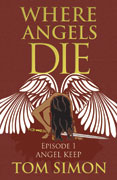

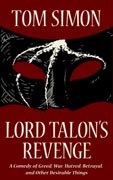

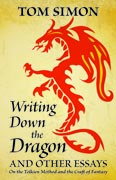
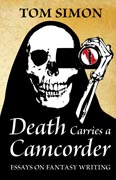
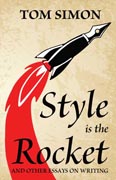
Patterns and Gnosticism: this is enlightening.
I now understand why I am sorry to hear an atheist like Scott Adams speak of patterns of recognition.
I still listen to Adams’ podcast from time to time because he is often funny, but I hate it when he speaks of patterns of recognition, or worse, the simulation, which is obviously Gnostic. I am pleased to know that pattern recognition is also Gnosticism.
Thank you, sir.
As I said in the essai, pattern recognition as such isn’t Gnosticism, but Gnosticism happens when your mind runs amuck and thinks everything is the same pattern.
Thank you for reading and commenting!
The Pixar pitch reminds me of the most succint explanation I ever heard about the difference between “story” and “plot” (which sounds like the thing LeGuin couldn’t teach her students to create) — I first read this courtesy of J. Michael Straczynski of BABYLON 5 fame but later found out it was originally coined by E.M. Forster in 1927:
“‘The king died, and then the queen died’ is a story. ‘The king died, and then the queen died of grief‘ is a plot.”
The “Pixar pitch” was new to me. Thank you for that. On to the next essai!
Thanks for reading and commenting!
For reasons that have nothing to do with storytelling, this was an absolutely astonishing article for me to read. I might even have called it life-changing, except that it didn’t so much alter my ideas about the world, as confirm them more fully than I had ever imagined possible.
You see, I came to the conclusion some time ago that, when Genesis 6:1-4 speaks of “the sons of God”, it is not referring either to angels or to godly men, but to the offspring of Adam (“who was the son of God”, as per Luke 3:38). “Men”, in this passage, would then refer to a group of creatures who are indeed taxonomically human, but are not made in the image of God and lack rational, immortal souls. In essence, they would be man-shaped beasts – highly sophisticated beasts, no doubt, with far more complex instincts and behavioral capacities than any bowerbird, honeybee, or chimpanzee, but still qualitatively different from men as we now use the word. (As God says in verse 3, man, in this sense, “is but flesh” – and it’s worth noting that man’s lifespan is said to be restrained for this reason to 120 years, in a period where the average for recorded Adamites was closer to eight times that.) This, to my mind, helps to explain why we find human remains so much earlier than even the most generous interpretation of the Biblical chronology ought to allow – and also the odd discrepancy between modern lifespans and those in early Genesis, if one presumes that we are all descended, one way or another, from the intermarriage of sons of God and daughters of men.
But this was all conjecture, of course. So far as I knew, no actual living brute human existed anywhere on Earth – which was understandable, of course, if the sons of God absorbed all their populations as they spread across the earth after Babel (hence, again, our modern lifespans), but it did still seem rather peculiar that not a single pocket of these creatures had survived in any out-of-the-way corner of our vast planet. And of course that laid me open to the charge of mere romancing, like any miserable Bible-thumper trying vainly to evade the plain infame-écrasant implications of Modern Scientific Findings.
So you can imagine how it felt to be reading through this essay (or essai), and to reach the eighth paragraph, and to suddenly find myself being regaled with an account of actual living human beings who do behave as though they lacked rational souls. A habit of speech that only extends to the immediately concrete: what more defining characteristic could one ask of creatures that had human instincts and emotions without Adamite minds? (And of course it’s in the South American jungles. Where else could a population like this survive unassimilated from the Scattering until now?) Never mind how I never knew about this before; the real question is, how did the people who did know about it not see the implication?
So yeah. The Pirahã, last of the Daughters of Men. That’s amazing. Thank you.
Interestingly, the man responsible for most of our information about the Pirahã did actually translate the Gospel of Mark into their language. However, the process of doing so apparently caused him to lose his faith, and converted no Pirahã. Make of this what you will.